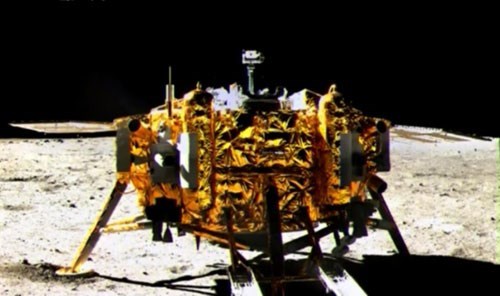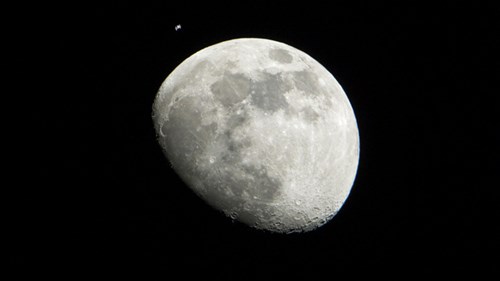China will send spacecraft to explore the dark side of the moon
China is planning to take the Hang Nga 4 probe into the dark side of the moon. This is an undiscovered area and has many mysteries with people.
China intends to take the Hang Nga 4 probe into the dark moon
This plan was revealed by Mr. Ngo Vi Nhan, chief engineer of China's moon exploration program. If successful, China will be the first to do this, CNN reported on May 21.

Chinese Hang Nga 3 exploration ship - (Photo: AFP)
Chinese scientists are arguing to choose the position to land on the moon. The place may be more difficult, the previous countries have chosen a landing position in the bright area and China may choose the dark moon region , China Daily quoted Ngo Vi Nhan.
Hang Nga-4 is expected to be launched in 2020 . The probe will go through three main stages, including approaching the moon's orbit, landing and returning, according to China Daily.

China will take the spacecraft to explore the dark moon - photo 2 The dark moon is still a place with many mysteries for humans - (Photo: AFP)
In 1959, the Soviet probe of Luna had for the first time photographed the dark side of the moon.
In 1968, the astronauts in the Apollo 8 US mission were the first to capture the area. Since then, many other probes have taken photos of the dark and most recently the US Air and Space Administration's Lunar Reconnaissance Orbiter (NASA).
The moon that we often see is actually only half, the other half is the dark area on the other side and for humans there is still mystery. Most of the dark surface area is South Pole-Aitken , the largest solar system in the solar system with a diameter of about 2,500 km .
In October 2007, China launched Hang Nga-1's first space probe in the southwestern province of Sichuan. The ship landed on the lunar surface in March 2009. Hang Nga-2 ship continued to be launched in 2010 and Hang Nga-3 was 2013.
- China launches spacecraft to explore the dark areas of the Moon
- China plans to explore the Moon's dark zone
- China responded to the ship Hang Nga to the Dark Moon in 2018
- China announced the vehicle to self-explore the dark side of the Moon
- China successfully landed the probe on the dark side of the Moon
- China revealed a model of spacecraft to send people to the Moon
- China will bring the probe to the dark side of the Moon in 2018
- NASA takes people to the dark side of the moon in 2028
- Russia is expected to send people to the Moon by 2020
- The mysterious 'eternal darkness' on the Moon
- The dark side of the Moon gradually
- China launches the Lunar Explorer spacecraft
 Van Allen's belt and evidence that the Apollo 11 mission to the Moon was myth
Van Allen's belt and evidence that the Apollo 11 mission to the Moon was myth The levels of civilization in the universe (Kardashev scale)
The levels of civilization in the universe (Kardashev scale) Today Mars, the sun and the Earth are aligned
Today Mars, the sun and the Earth are aligned The Amazon owner announced a secret plan to build a space base for thousands of people
The Amazon owner announced a secret plan to build a space base for thousands of people